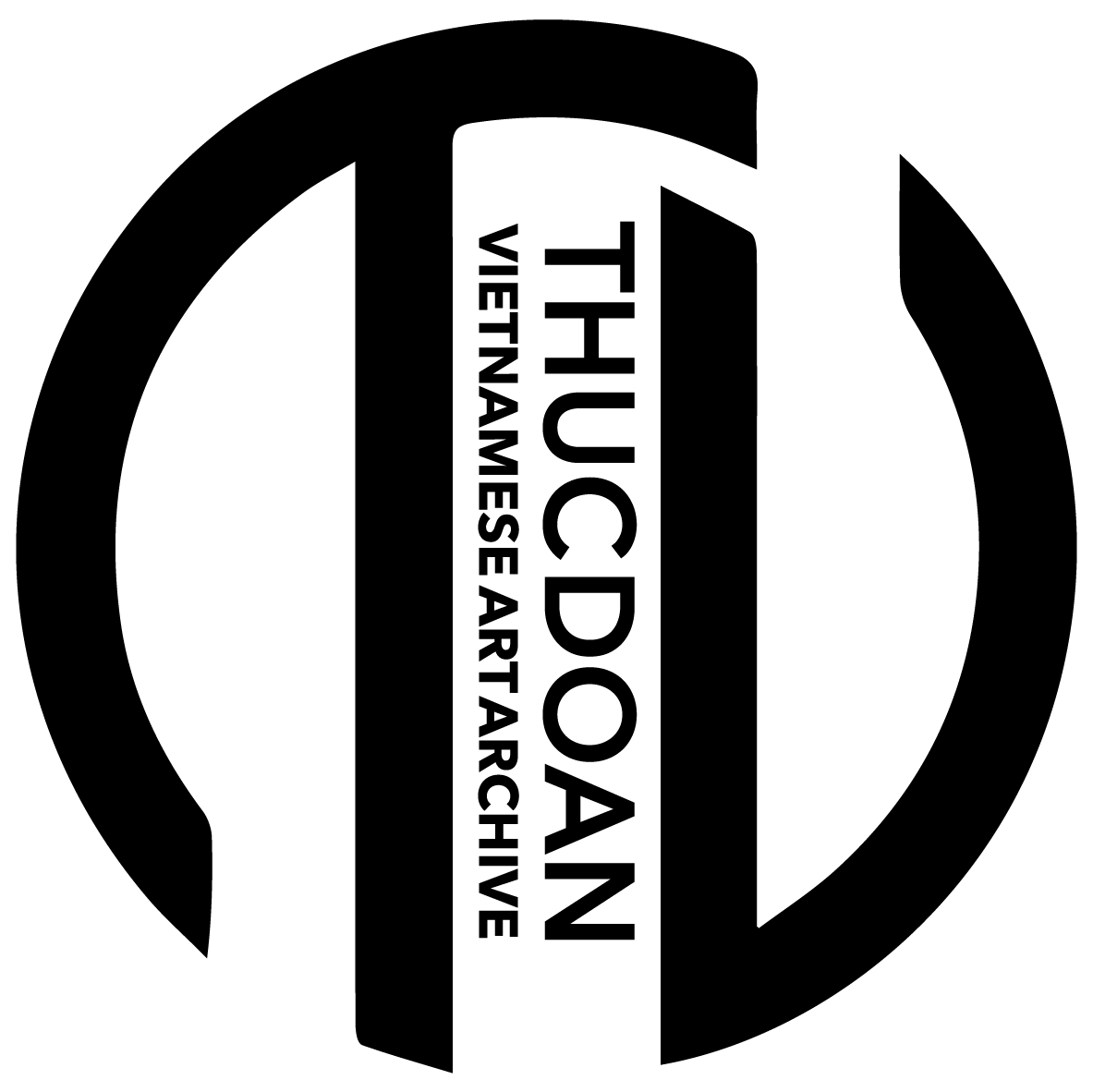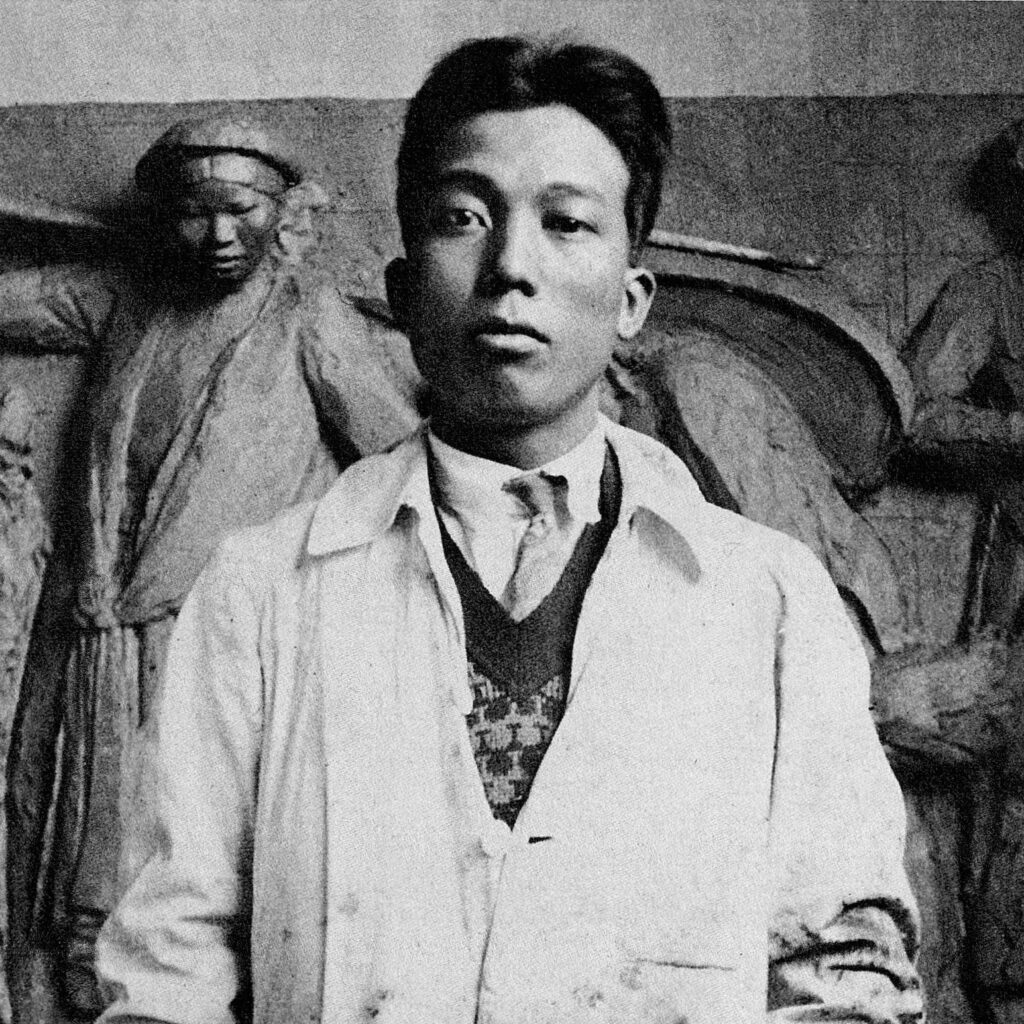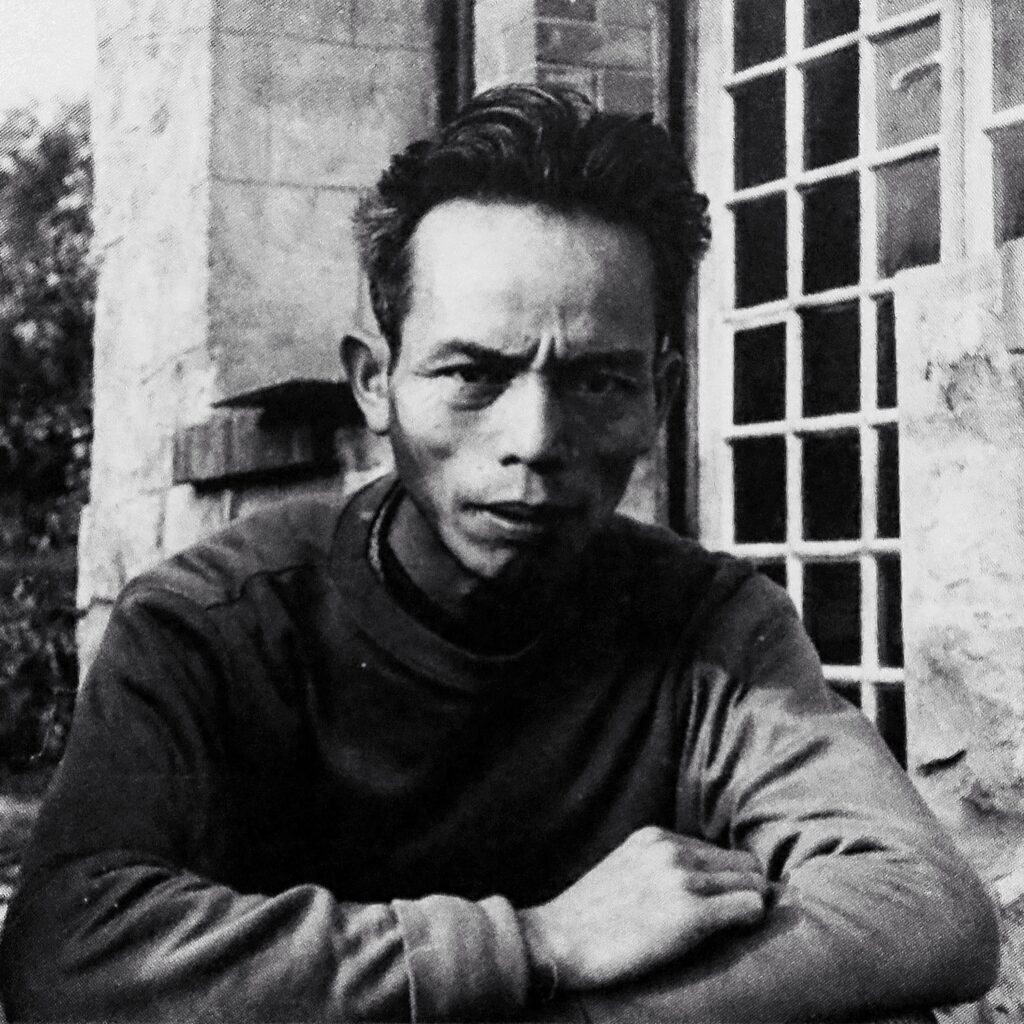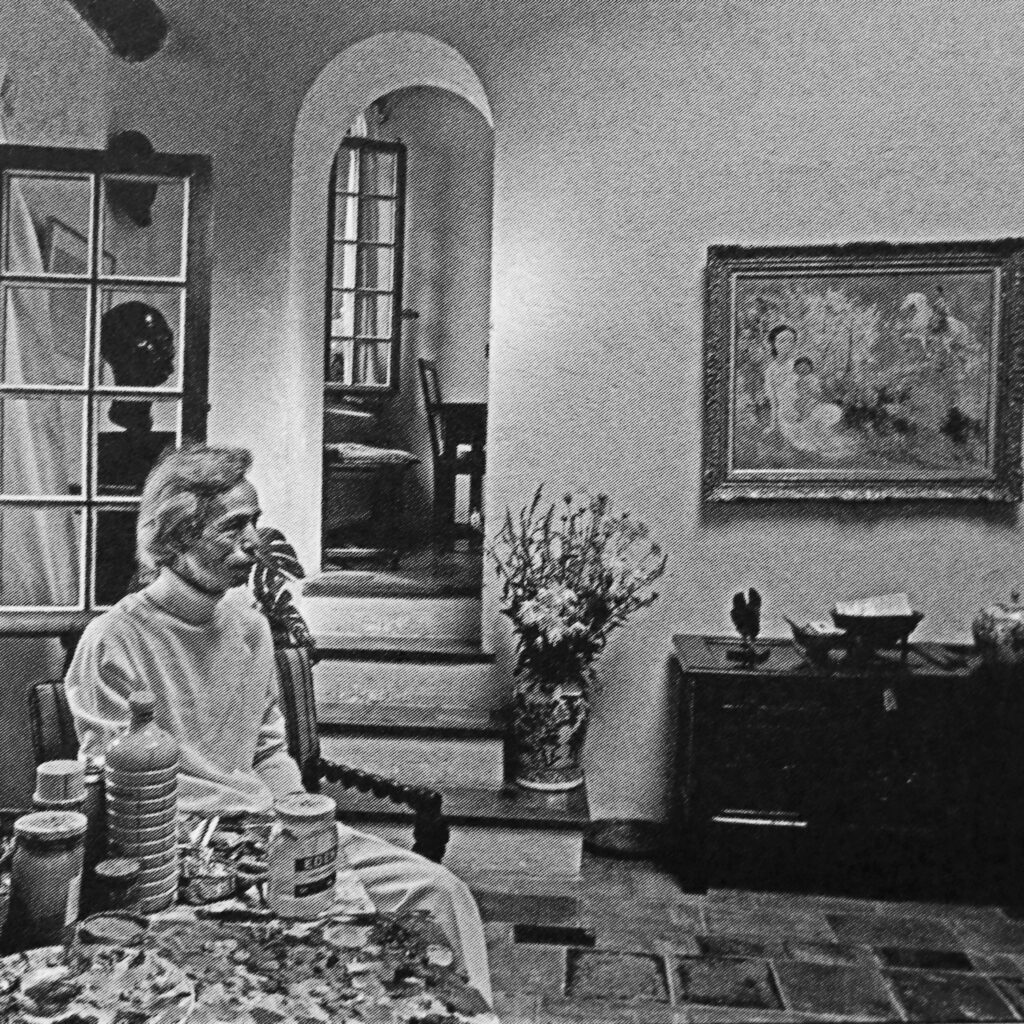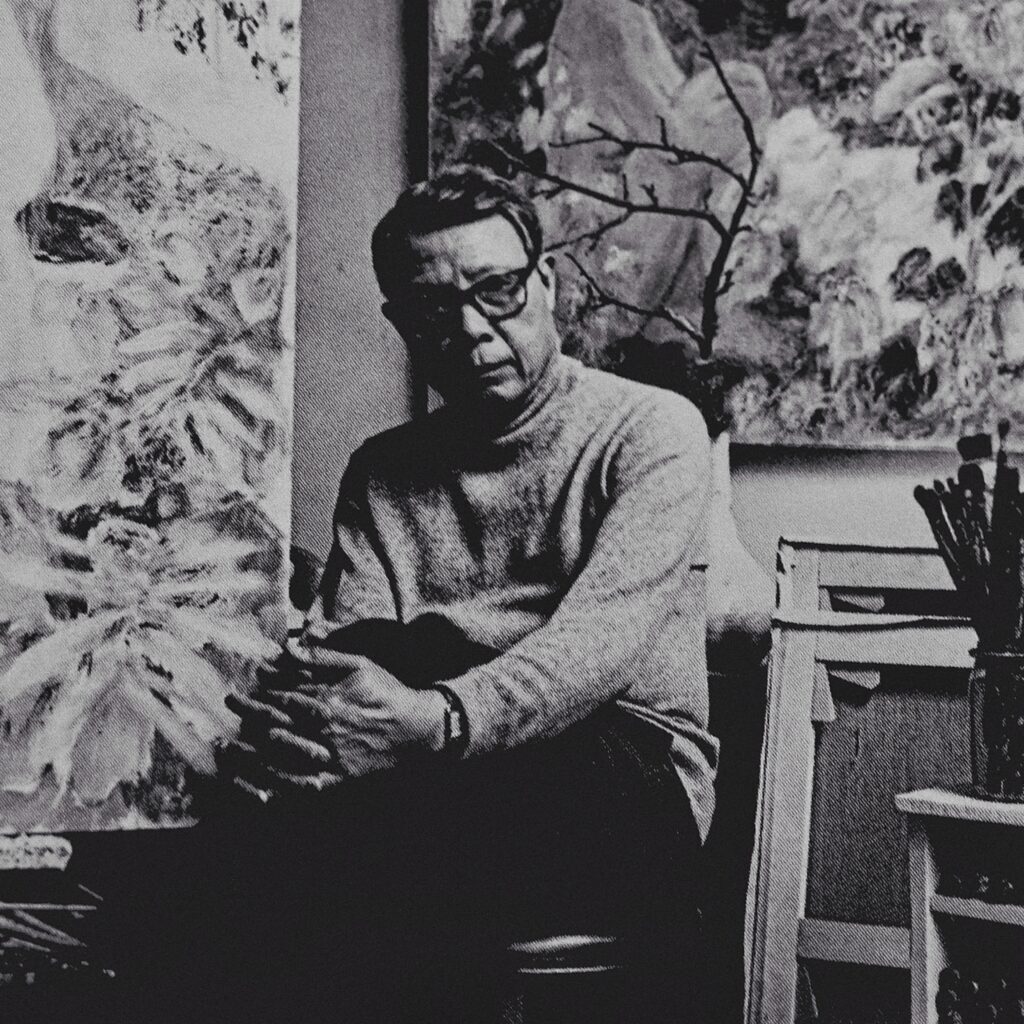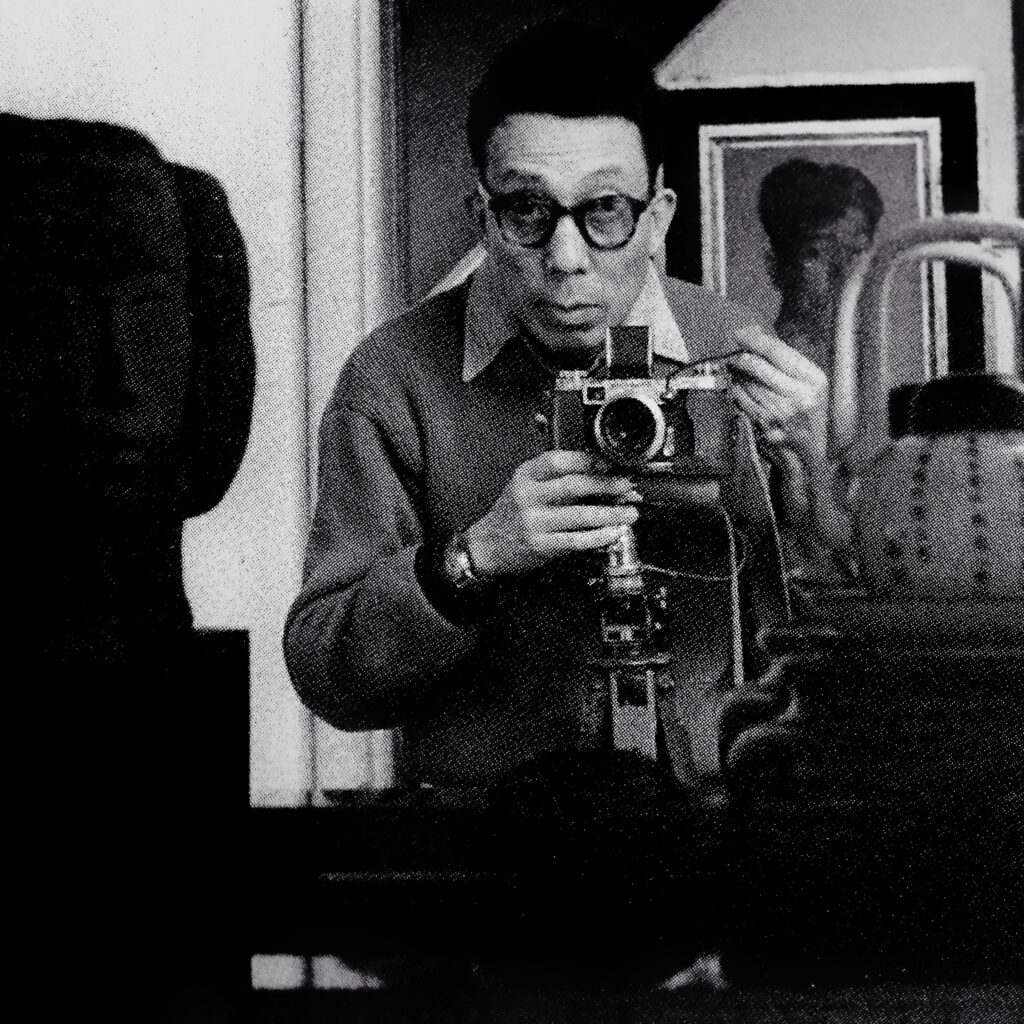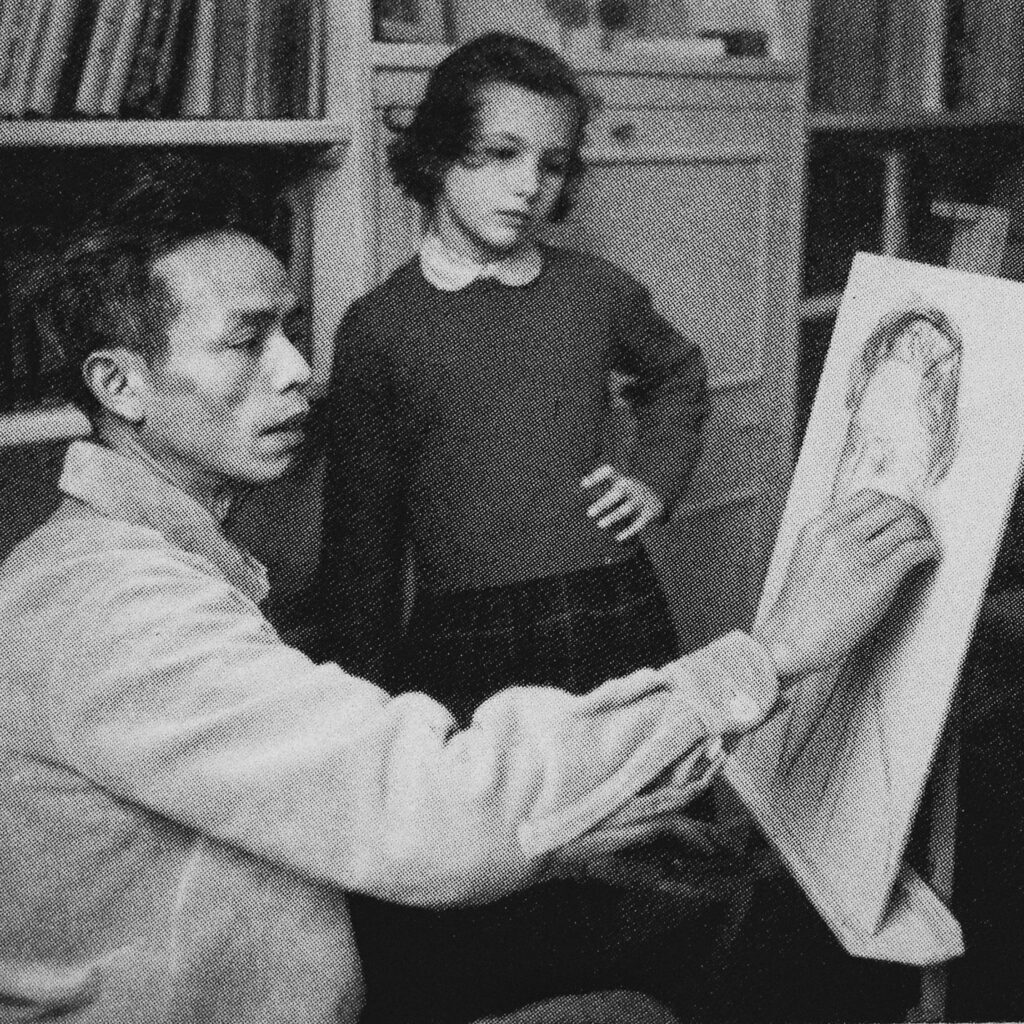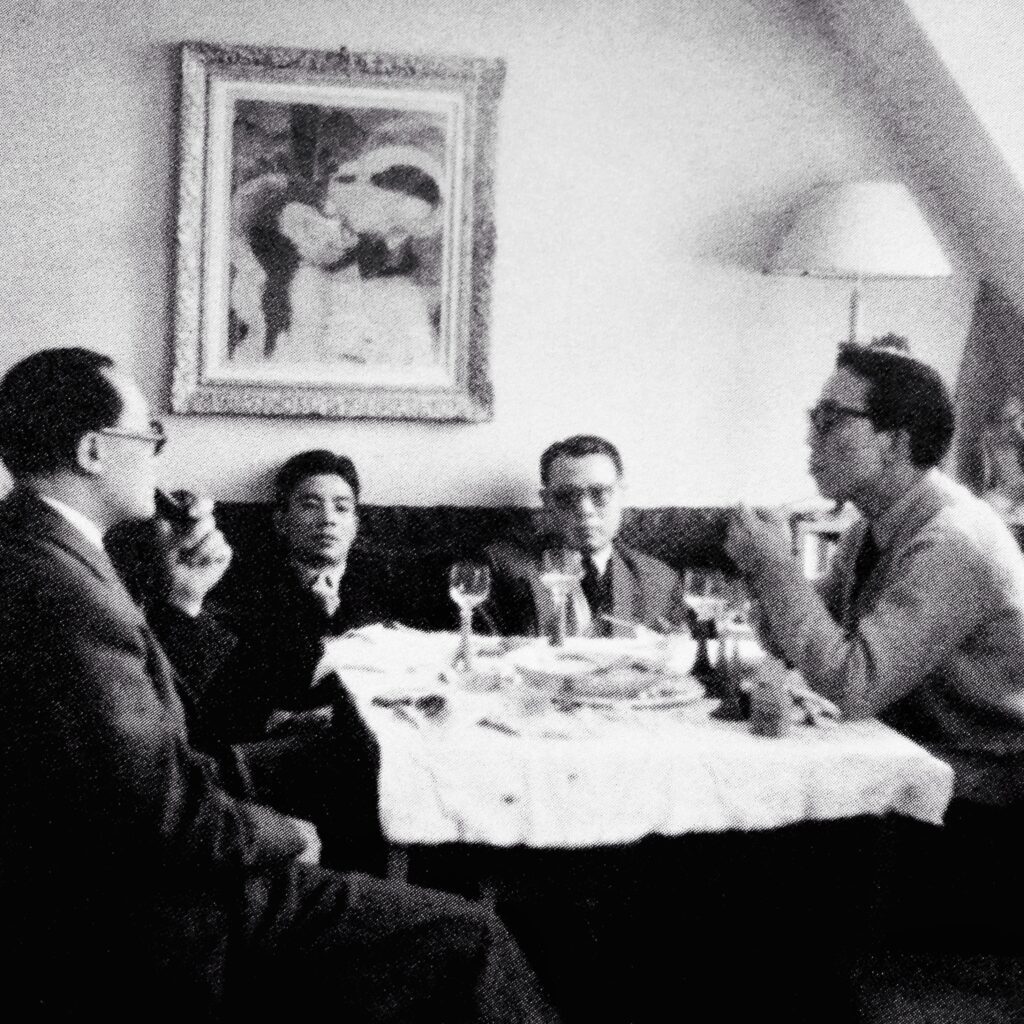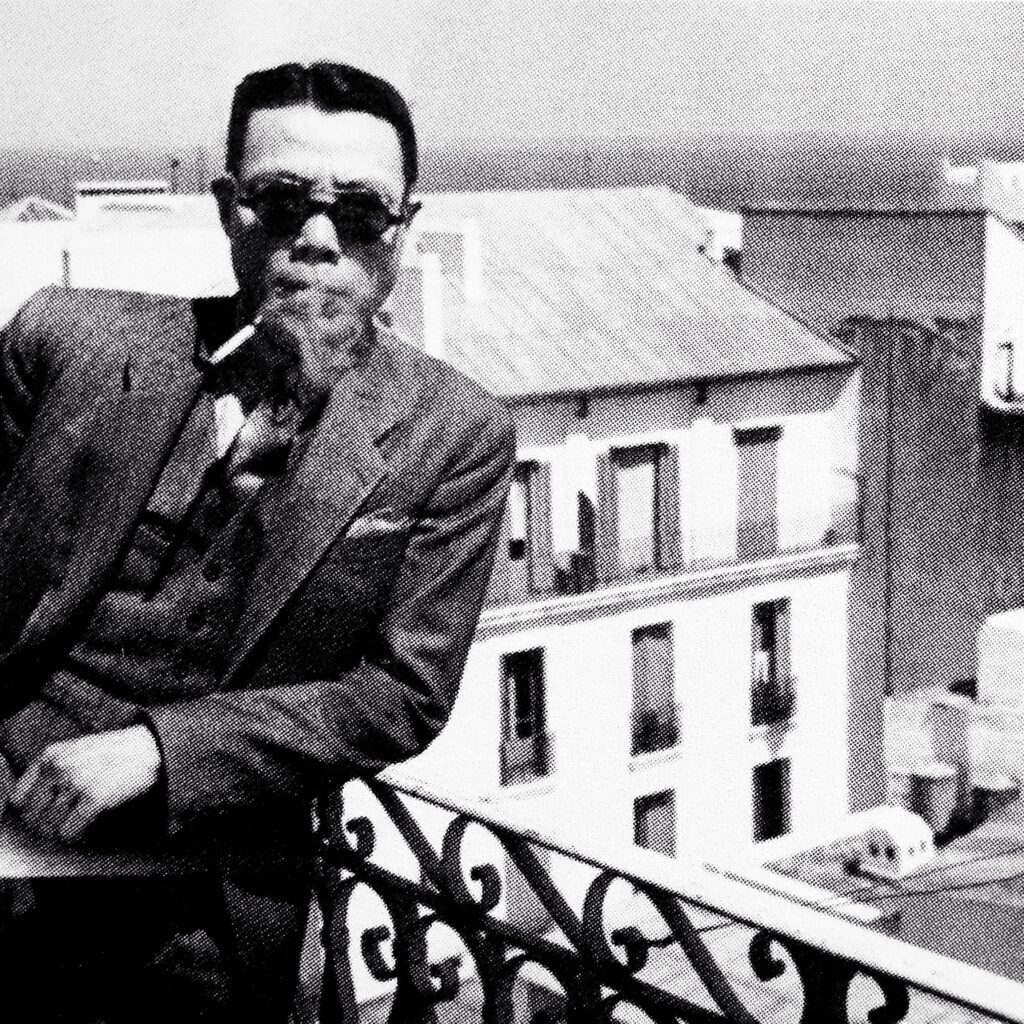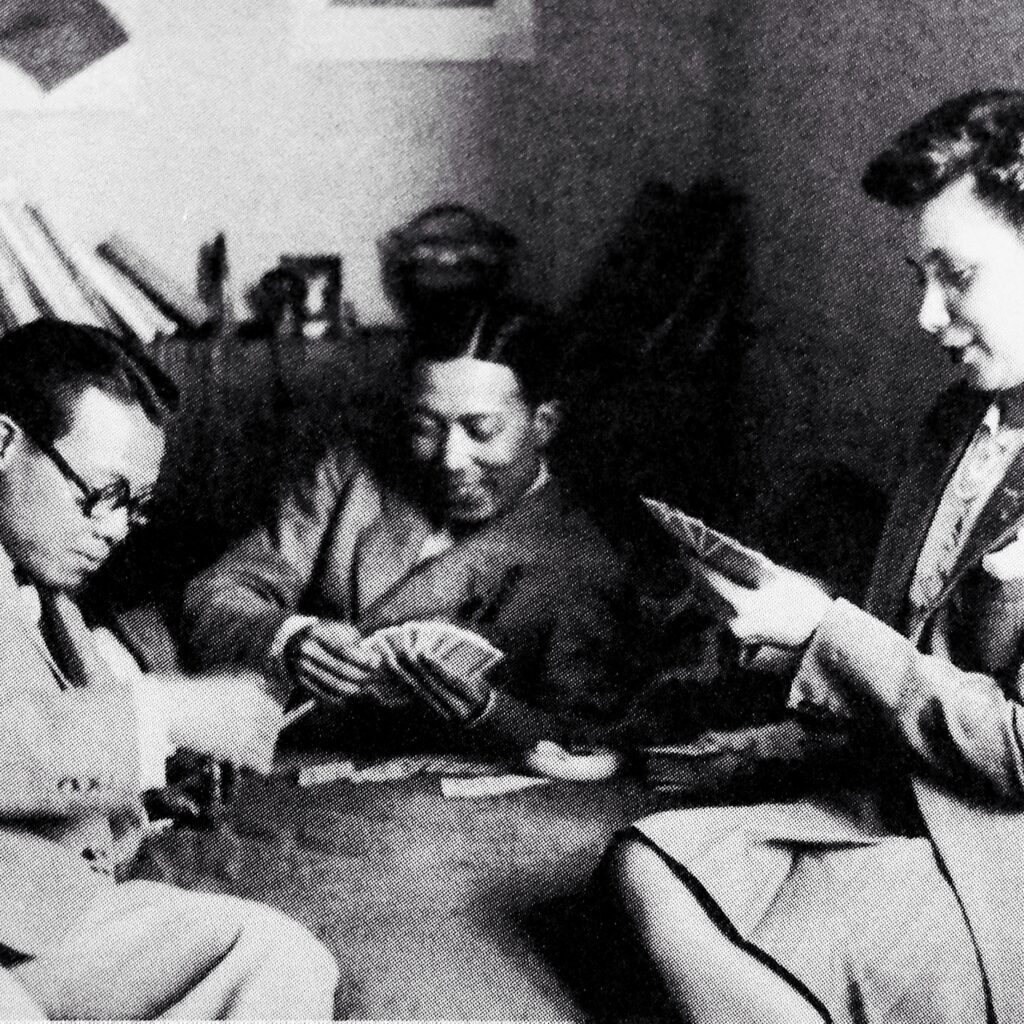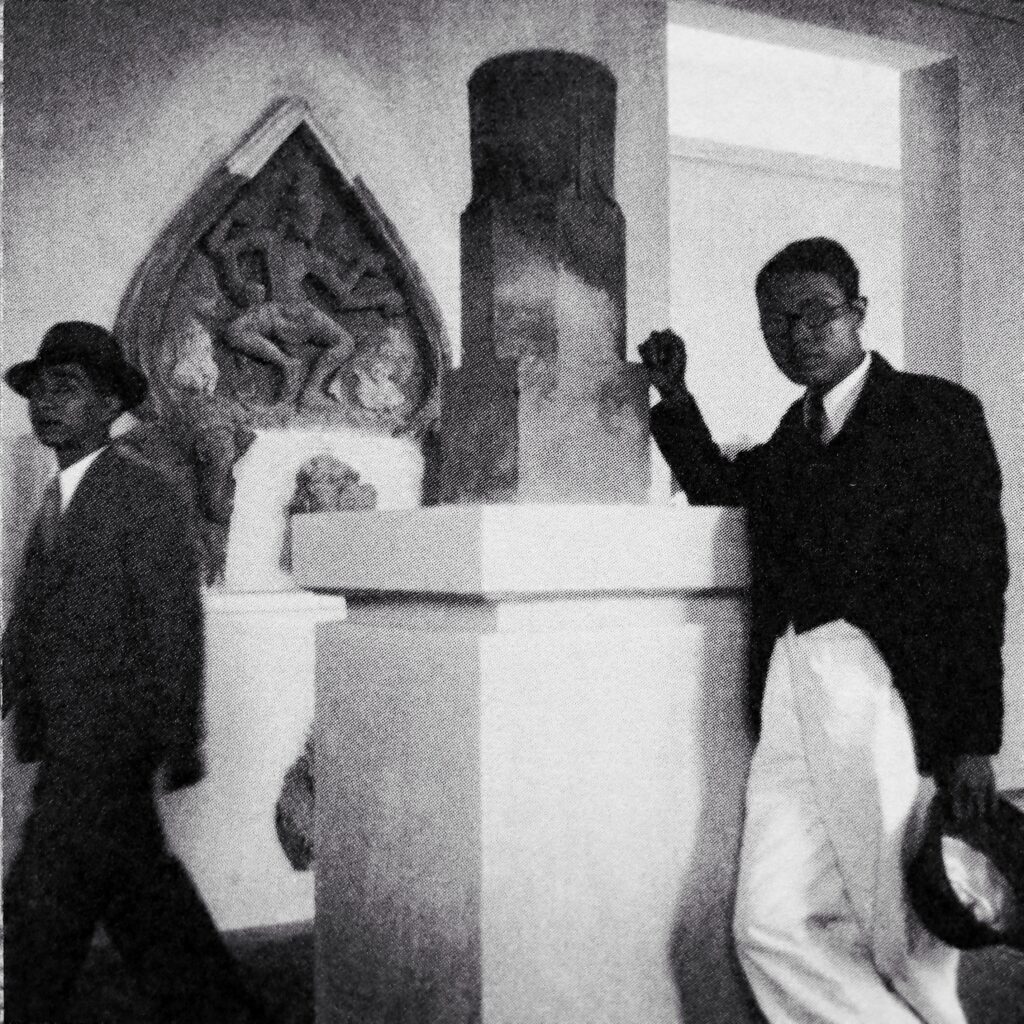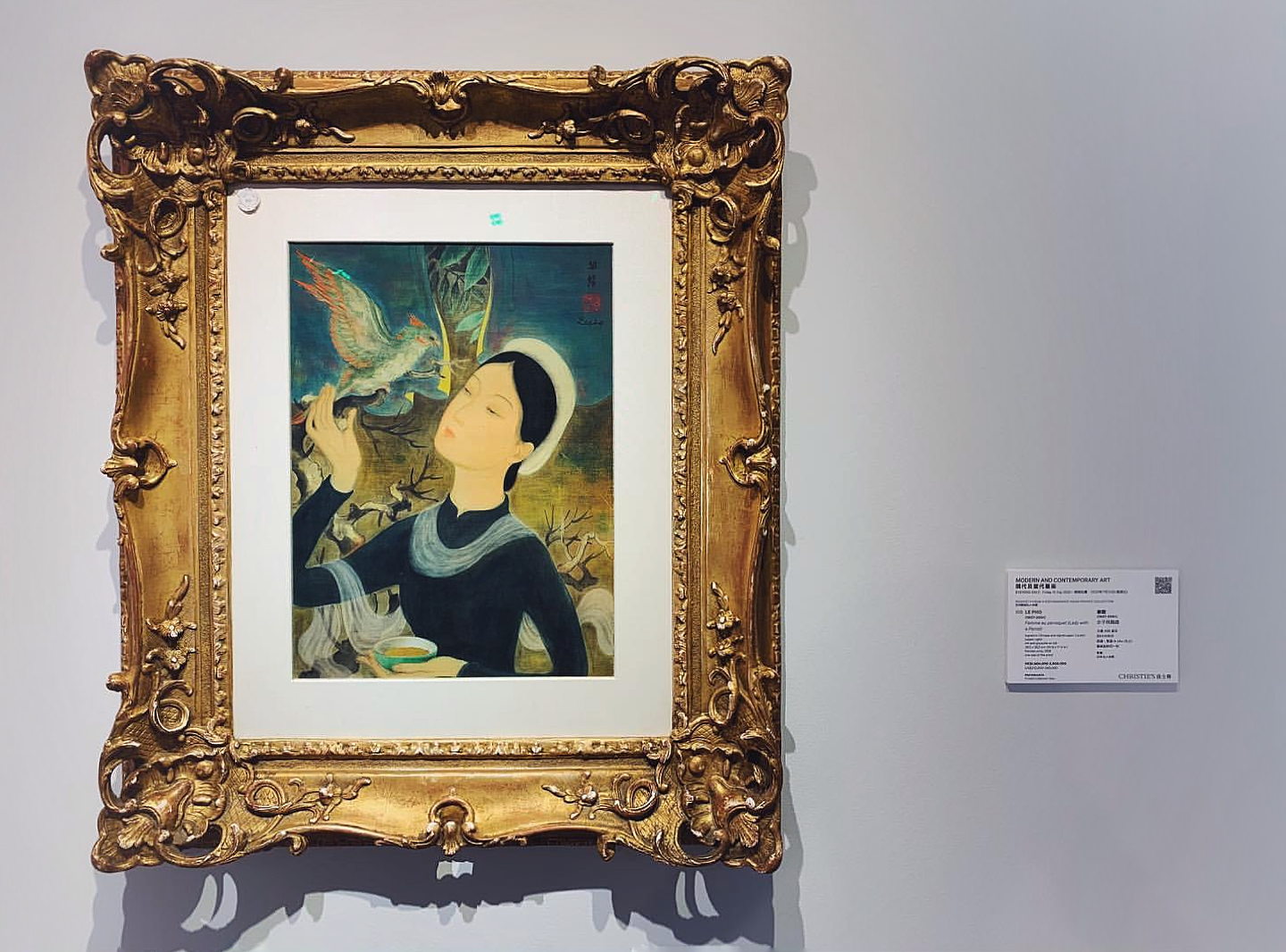
Detail of Femme au perroquet (Lady with A Parrot) at Christie's Hong Kong, 10 July 2020
Le Pho (1907-2001)
Femme au perroquet (Lady with A Parrot)
signed in Chinese and signed again ‘Le pho’ (upper right)
ink and gouache on silk
38.5 x 28.5 cm. (15 1/8 x 11 1/4 in.)
Painted circa. 1938
one seal of the artist
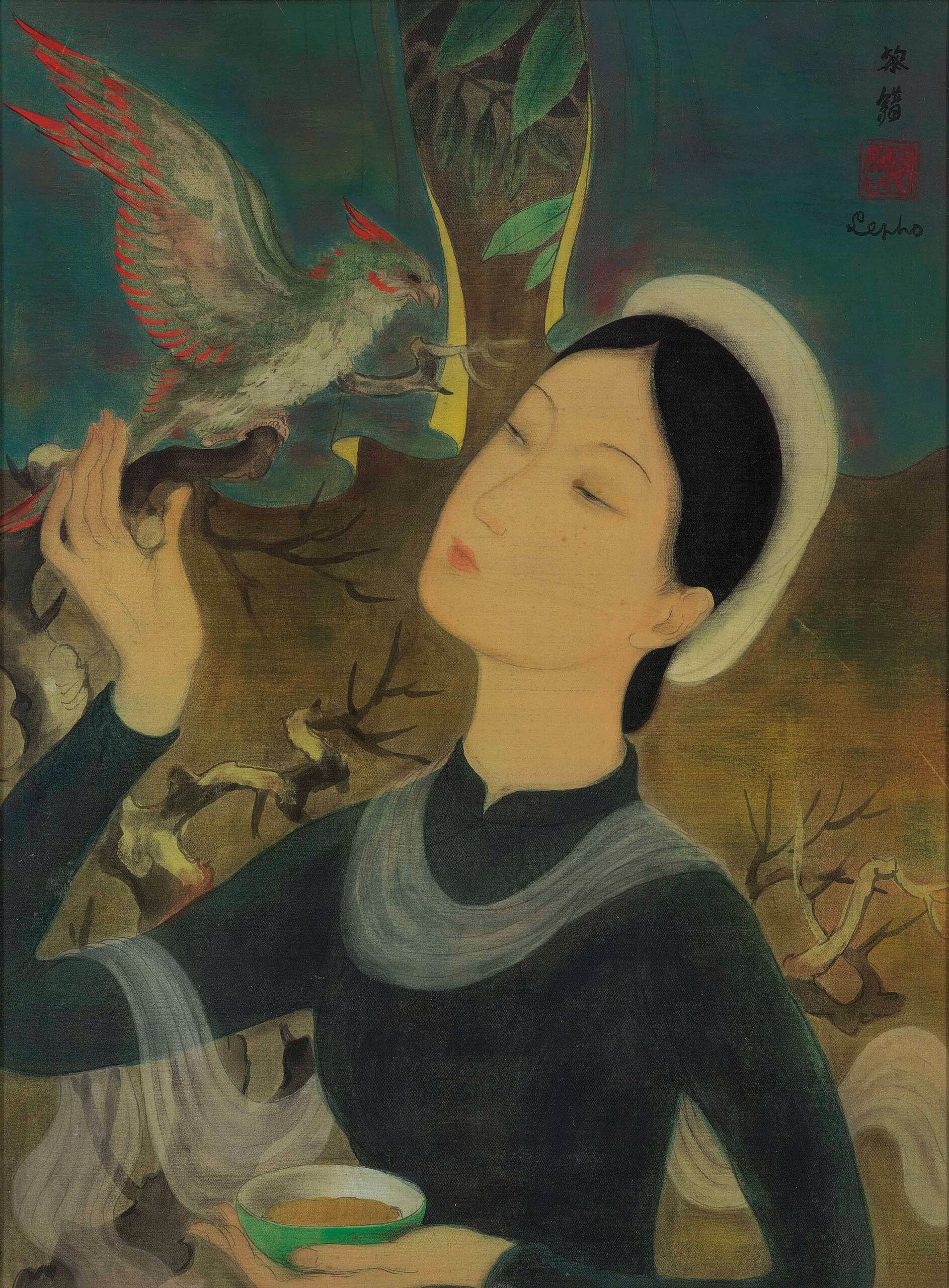
Four elements form the basis of this magnificent painting: the female figure, the place, the parrot, and the bowl, with each of them having special significance in the current painting.
The woman as the main protagonist is dressed in her traditional ao dai, her Tonkinese headdress, a long scarf undulating around her body. She is well poised with distinction, her general posture and the grace in her gestures reinforced by her dark blue clothing. Her face, anonymous, of extreme beauty, endowed with dignified strength, is beguilingly half-amusing and half-provocative, the very embodiment of a Vietnamese woman. Fearless and bold in expression, she grasps the branch with her right hand, seemingly not showing any apprehension.
The place and setting expresses a certain austerity confirmed by the dark tones of the gouache and the energetic use of ink for the woman's hair. The space, in an assumed verticality, is divided by the two-colored curtain (blue-grey on one side, yellow on the reverse). The inside with the faded branches of the tree on which the bird is perched; the outside where the greenness of the leaves are refreshing. A branch of the tree, seems to emerge from behind the bird's body like a claw towards the woman. This dead tree, is used as a perch - while nature is otherwise vibrant behind the half-open curtains - what does it mean? Le Pho does not want the observer to go astray with no landscape in the background - an aspect he likes to paint then at the time and the painter enjoins us to concentrate on the only scene that is worthwhile: the meeting between the woman and the bird.
The bird is an exotic species in Europe, but has been present at least since the Middle Ages in captivity as a property reserved for the elite. It is a red-crested cockatoo with a blackish iris (thus a male) typical of a species from the Moluccas. It feels the close hand of the female as a danger as evidenced by its erect crest and flapping wings.
The bowl held by the woman forms the link between the woman and the bird: lacquered green on the outside, silvery on the inside, an allusion to Vietnam, the object serves a secondary purpose within the composition. The artist is not very precise about its contents: perhaps it holds a kind of wheat bran to feed the bird, or something else to sustain the woman?
As always, in Le Pho everything is an allusion. Softness is the message.
And here, Le Pho represents the east through the woman. The bird is the west. The first one is already westernized by her quest. The second is already exotic. The two worlds do not have to face each other since there is no discord between them, just acceptance. There is no attraction without fear and both seemingly feed off each other's food.
Le Pho, who settled permanently in France in 1937, has always proclaimed his extreme fascination for the European Primitives which he discovered in France, Belgium, Germany and Italy in 1931-32. However it would be too simple a reference to Le Pho to confine him into one and only influence. As much as he renounced the Chinese influence in 1934, he liked to draw inspiration from the best Europeans, both ancient and modern. He is influenced by European painters: elders such as Mantegna, Tiepolo, Holbein the Young, Titian and two, Bonnard and Matisse, whom he met in France and for whom he had a great admiration very early on.
Thus in The Woman with the Parrot Le Pho completes Titian with Matisse, Hans Holbein the Younger with Bonnard.
With Titian, for the first time in the history of painting, color prevails over drawing and light over line. Matisse imposes ‘fawn’ colors, a conquering light but reintroduces the color line essentially as in his masterpiece Portrait of Greta Moll, 1908 (The National Gallery, London). Le Pho does the same with a clear light that enhances the naturally matte tones of the gouache, which intensify each other. Hans Holbein the Younger Lady with Squirrel and Starling was so good at blending Italian subtlety with Dutch candor. Le Pho excelled at giving an Asian body to what is an European soul. Bonnard used to repeat, "Art is not nature", as this silk and all his work shows, Le Pho is reluctant to naturalism.
Let us add to reveal further the allusive aspect in Le Pho’s painting that the parrot, since the European Middle Ages, is the symbol of the resurrection of the Immaculate Conception and thus of Christ. And here it appears premonitory:
In ten years of my regular talks with Le Pho in his bright apartment on Rue de Vaugirard, not once had the subject of religion been mentioned. Yet Le Pho died in the religion of Christ. It was Paulette Le Pho herself that shared this with me after the funeral of her husband in 2001 celebrated in the Church of Saint Francois-Xavier. Converted to Catholicism, Le Pho had taken the baptismal name "Victor", in homage to his revered master Victor Tardieu.
The Woman with the Parrot is a fundamental work of Le Pho which marks the mental shift of the painter towards the West. The journey, with no return, takes place there, in front of us.
And it is here that we witness the pleasant triumph of a painter over himself.
Jean-Francois Hubert
Senior Expert, Vietnamese Art
